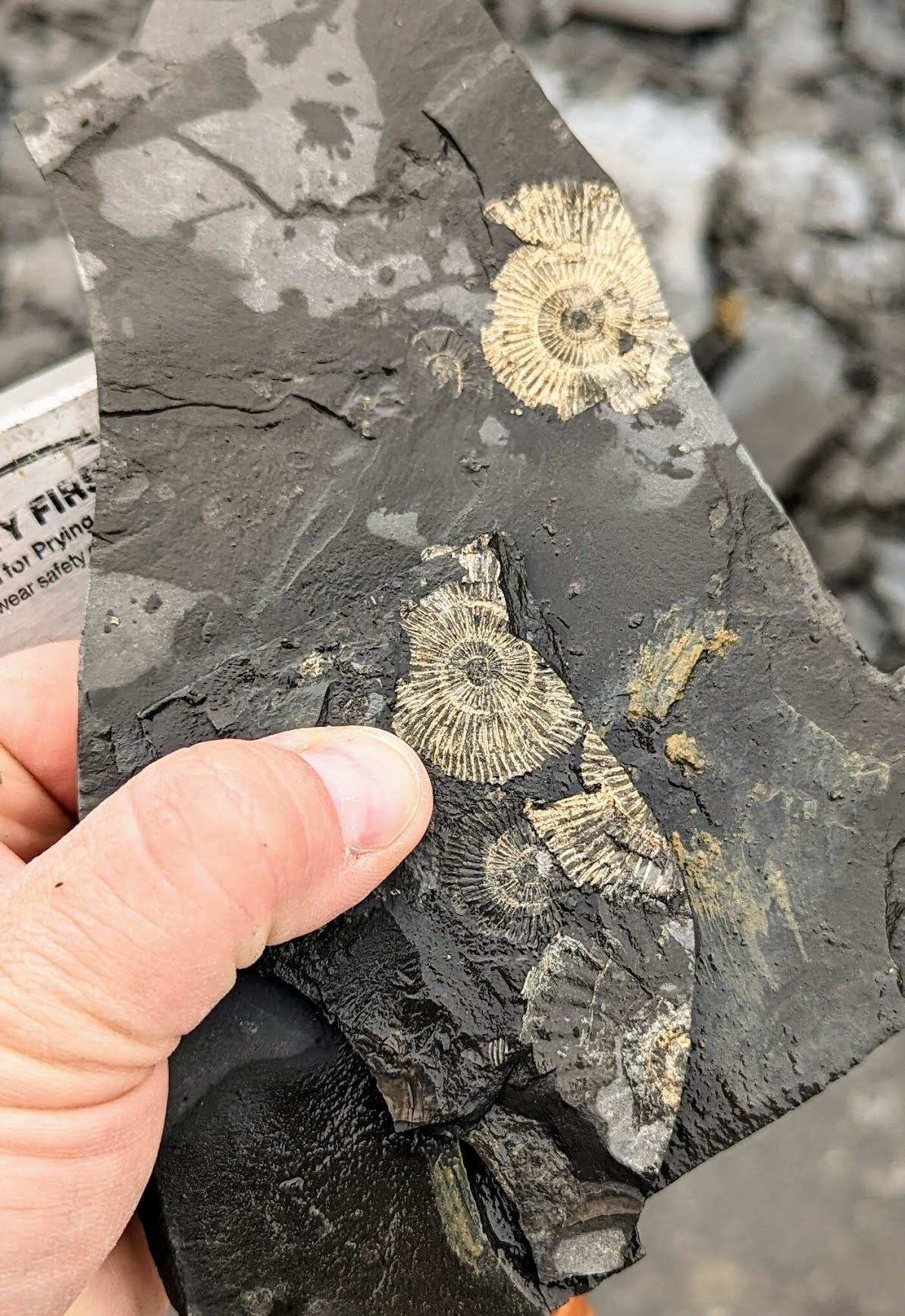All that glitters is not gold, or even fool’s gold in the case of fossils. Scientists from The University of Texas at Austin and their colleagues have discovered a new insight into the fossils from Germany’s Posidonia shale. Contrary to the long-held notion that the shimmer of the fossils was caused by pyrite (fool’s gold), the team has found that the golden gleam is a combination of minerals, which could provide clues about the environment in which the fossils were formed.

Uncovering the genesis of these Early Jurassic fossils — some of the most well-maintained marine life remains in the world — is significant for comprehending the part that oxygen levels in the atmosphere had in their creation.
Rowan Martindale, an associate professor from the UT Jackson School of Geosciences, commented that when people visit the quarries, they can observe golden ammonites emerging from the dark shale slabs. “But surprisingly, we struggled to find pyrite in the fossils. Even the fossils that looked golden, are preserved as phosphate minerals with yellow calcite. This dramatically changes our view of this famous fossil deposit.”
The study, which was guided by Drew Muscente (a former assistant professor at Cornell College and Jackson School postdoc researcher), was recently documented in Earth Science Reviews.

The fossils of the Posidonia Shale have a history that can be traced back to 183 million years ago, and these fossils hold some rare soft-bodied specimens such as ‘ichthyosaur embryos’, squids with ink-sacs, and lobsters. With the intention of understanding the circumstances of fossilization that caused such detailed preservation, the team of researchers used scanning electron microscopes to analyze the chemical composition of a multitude of samples.
“I couldn’t wait to get them in my microscope and help tell their preservational story,” said co-author Jim Schiffbauer, an associate professor at the University of Missouri Department of Geological Sciences, who handled some of the larger samples.
The researchers found that in every instance, the fossils were primarily made up of phosphate minerals even though the surrounding black shale rock was dotted with microscopic clusters of pyrite crystals, called framboids.
Sinjini Sinha, a doctoral student at the Jackson School, commented on the process of trying to find the framboids on the fossil, remarking that “I spent days looking for the framboids on the fossil,” She also noted that “for some of the specimens, I counted 800 framboids on the matrix while there was maybe three or four on the fossils.”
The presence of pyrite and phosphate in different areas of the fossils is critical as it discloses essential information about the fossilization surroundings. Pyrite forms in anoxic conditions, whereas phosphate minerals need oxygen. This study implies that while an anoxic seafloor serves to protect fossils from degradation and predators, it was a pulse of oxygen that was required to trigger the chemical processes necessary for fossilization.

These findings complement earlier research carried out by the team on the geochemical conditions of sites known for their caches of exceptionally preserved fossils, called konservat-lagerstätten. However, the results of these studies contradict long-standing theories about the conditions needed for exceptional fossil preservation in the Posidonia.
“It’s been thought for a long time that the anoxia causes the exceptional preservation, but it doesn’t directly help,” said Sinha. “It helps with making the environment conducive to faster fossilization, which leads to the preservation, but it’s oxygenation that’s enhancing preservation.”
It turns out, the oxygenation — and the phosphate and accompanying minerals — also enhanced the fossil’s shine.
The study originally published in the journal Earth-Science Reviews. 23 January 2023.




